AMD vs. Intel: Battery Life Investigated
by Jarred Walton on August 5, 2009 5:00 PM EST- Posted in
- Laptops
Laptops: Comparing Apples to Apples
Anyone looking to go out and purchase a new laptop is almost certainly interested in a couple things: how much does it cost, and what sort of battery life can you expect? Answering those questions for any specific laptop is simple enough, provided we can get a sample unit for testing. However, it becomes more difficult to answer these questions when you're looking at the big picture -- i.e. AMD vs. Intel laptops. The pricing question is easier: laptops using AMD platforms are (usually) cheaper than equivalent Intel platform laptops. That's simple enough: you're paying more for the Intel brand. But what about battery life?
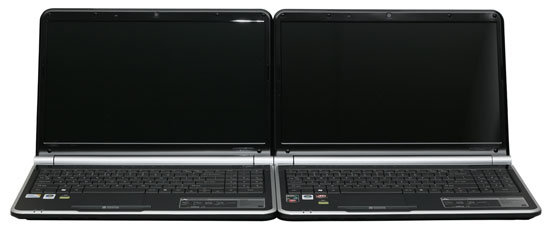 |
We have long tried to answer that question, but the best we could do up until this point was to compare "similar" laptops. Getting the same LCD, hard drive, optical drive, and most importantly battery has been very difficult -- so difficult that we have not been able to do it. A few manufacturers offer competing AMD and Intel laptops with very similar specifications, but no one seemed willing to send their AMD-based system. Were they afraid of cannibalizing sales of their more expensive laptops? Did they just think that an AMD-based laptop wouldn't stand up well in our testing? We don't know for sure, but what we do know is that Gateway has stepped up to the plate and sent us two all but identical laptops. We've been busy the past week or two putting the laptops through our test regimen, and we will have the full review shortly. In the meantime, we thought you might be particularly interested in the battery life you can expect.
Here's a quick look at the two laptops. On top is the AMD-based Gateway NV52, and below it is the Intel-based Gateway NV58.
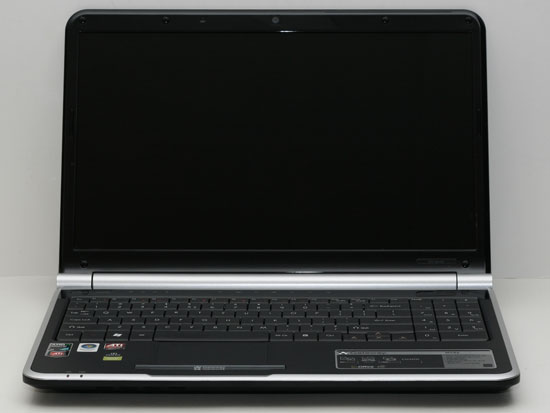 |
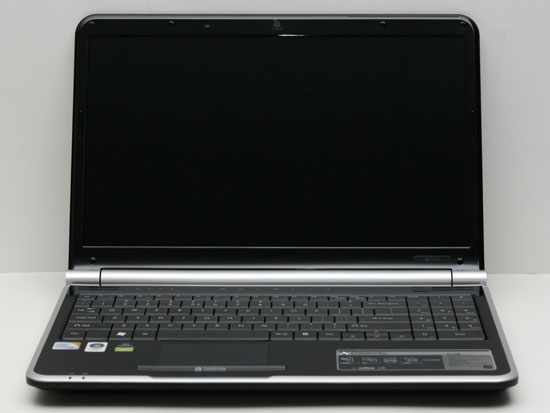 |
Here's a second look, focusing on the keyboards. Once again, AMD is above and Intel is below.
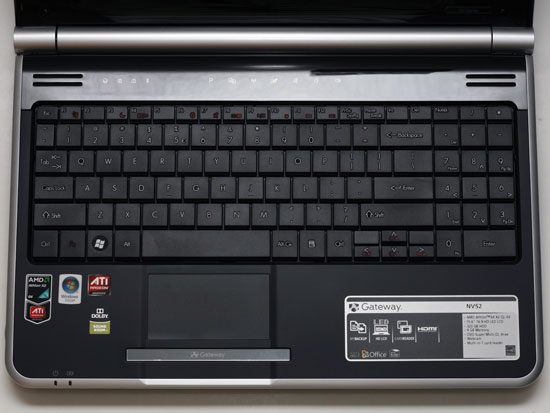 |
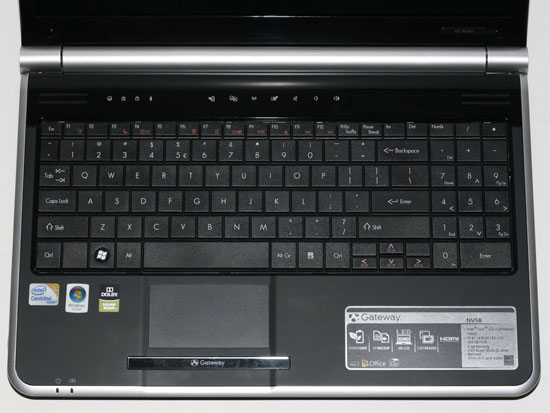 |
The chassis are identical from the outside, and everything else is the same as well other than the motherboard, chipset, and processor. Both come with 4GB DDR2 memory, a 15.6" 1366x768 LED backlit LCD, 320GB 5400 RPM hard drive, and a DVDRW. Both also include Gigabit Ethernet and 802.11n WiFi (Intel WiFi Link 5100 for the NV58 and Atheros AR928X for the NV52). In fact, even the CPUs have the same 2.1 GHz clock speed -- not that CPU clock speed matters -- as well as 35W TDP ratings -- not that that matters either, as we'll soon see. On the AMD side, we have the QL-64 (65nm, 2.1GHz, 2x512K L2, 3600MHz HyperTransport bus), and on the Intel laptop we have the T6500 (45nm, 2.1GHz, 2MB shared L2, 800MHz FSB). We should also mention that the NV58 costs more than the NV52, $500 for the NV52 and $580 for the NV58. What does the extra $80 buy you?
We will have performance numbers in our upcoming full review, but considering this is a match between AMD's old dual-core Athlon 64 X2 (K8 architecture) and Intel's Core 2 Duo, you can probably already guess the results. Intel is quite a bit faster in all of the CPU benchmarks. On the other hand, the AMD platform comes with much better integrated graphics, so if you would like to do a bit of 3D gaming on occasion (at low to medium detail levels) AMD easily wins the graphics benchmarks. Now let's look at battery life.










80 Comments
View All Comments
zsdersw - Thursday, August 6, 2009 - link
"Battery life should not be a concern at all for most laptop users, because most people use their laptops at home"Apparently you've never heard of the business world.
anactoraaron - Thursday, August 6, 2009 - link
"So, what is the point in paying a higher price premium for an Intel laptop, because it has a longer battery life?"For me, I needed a laptop that I can take with me anywhere (out of state, etc) and be able to run photoshop cs3 and run it well. It is common knowledge that photoshop favors intel's core architecture (both dual and quad) and from my own experience on mobile platforms intel beats amd by 100-300% depending on what you are doing. Would I pay more for 300% improvement? Uh... yes.
I also would like to say that the current photoshop benchmark is nice, but it should be treated as just any other benchmark - meaning real life usage may differ. One of the things I do alot in photoshop is make contact sheets (used as proof sheets, flattened and saved as pdf's) - which are VERY cpu intensive. Try crunching 300 images on 54 images/sheet making 6 sheets and time the results. This type of benchmark will run for up to 15 minutes on an older core 2 system. My q8400 does 1 sheet per minute- which I still think is fast. Just a suggestion.
JarredWalton - Wednesday, August 5, 2009 - link
Most people don't buy a laptop because it's smaller in my experience; they buy them because they're mobile. Anyway, even if you don't want to have better battery life, why pay the price premium for Intel? Well, 30% better performance is something useful I'd think... unless you plan to play lots of games with the IGP.medi01 - Thursday, August 6, 2009 - link
Nope. At least not me. I have 2 laptops and 1 PC at home. All 3 stay at home all the time.strikeback03 - Thursday, August 6, 2009 - link
Mobile doesn't necessarily mean it leaves the house, but you can more easily move a laptop from the office to the living room to the kitchen table to the hammock outside if needed. In this class of notebook (15.6") mobility might be less of a concern, but the platform differences should hold up through all segments, including ones where battery life is a larger factor in which unit to purchase.Jamahl - Wednesday, August 5, 2009 - link
a few benchmarks of fps in gaming would have been nice if only to show that the intel is awful and the amd is capable.pjtomtai - Thursday, August 6, 2009 - link
Who games on IGP? There ARE laptops with discrete for that purpose. 80% of users don't game, while 80% depend on a solid laptop with longer battery time for work/life on move.xrodney - Thursday, August 6, 2009 - link
Well i have expensive gaming machine, but still play games on notebook time from time. Not always my gaming machine is available for gaming {rendering etc} so i am using notebook instead or i am not near to it at all. And from my personal experience many people around me is doing same.JarredWalton - Thursday, August 6, 2009 - link
I've run all the benchmarks; I'm just writing the main article at this point and it should be done for Friday. In terms of gaming, as I mentioned in this piece, the AMD solution is substantially faster - anywhere from 50% to 200% faster, with the average being around 125% faster. (The 50% comes from Empire: Total War, incidentally.) To be honest, I was actually surprised at the number of games the Intel IGP could manage to *load* - last time I looked at that on a GMA IGP there were only a few modern games that would try to load at all. LOLJeffk464 - Thursday, August 6, 2009 - link
pshh, games belong on desktops.